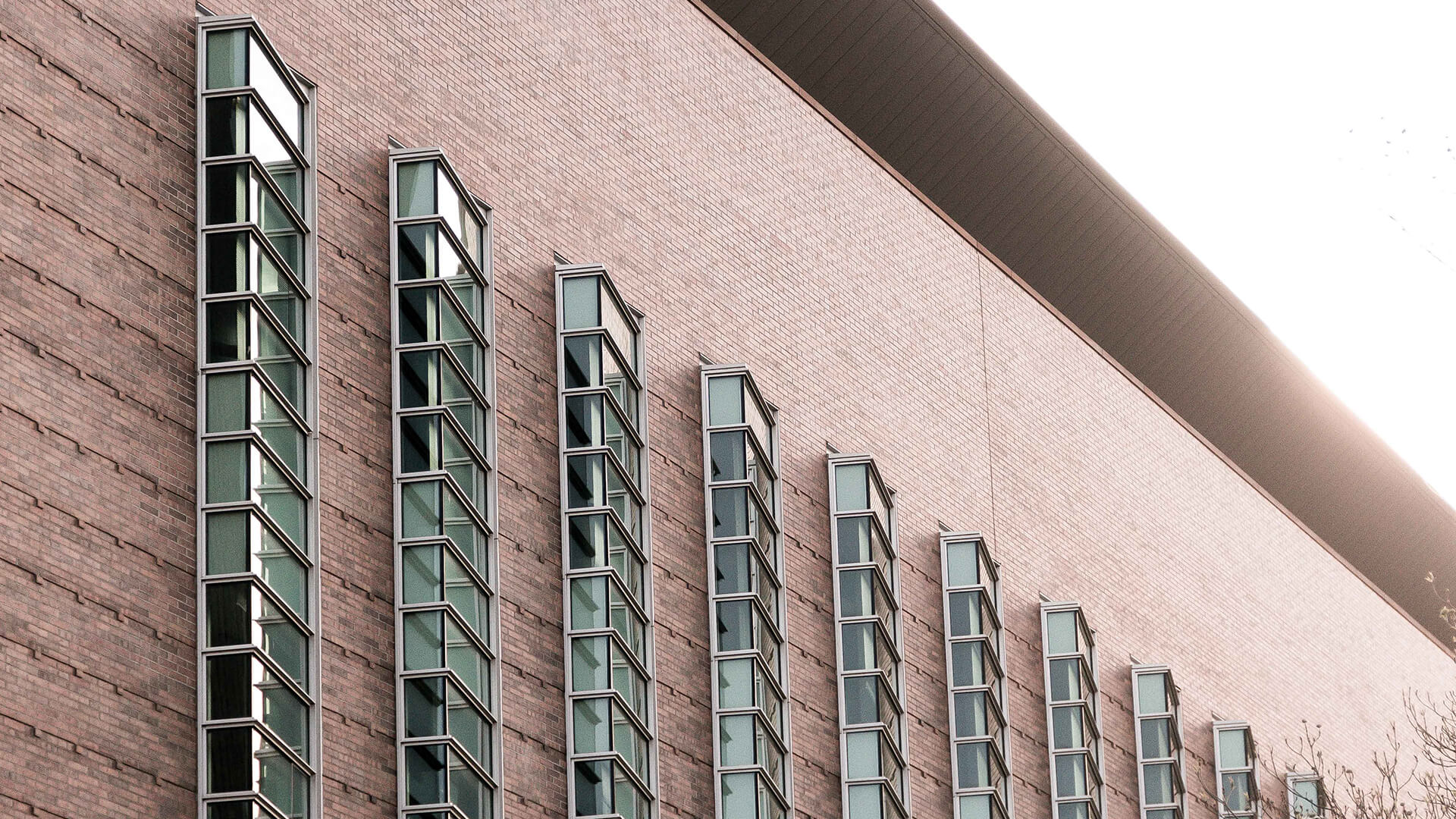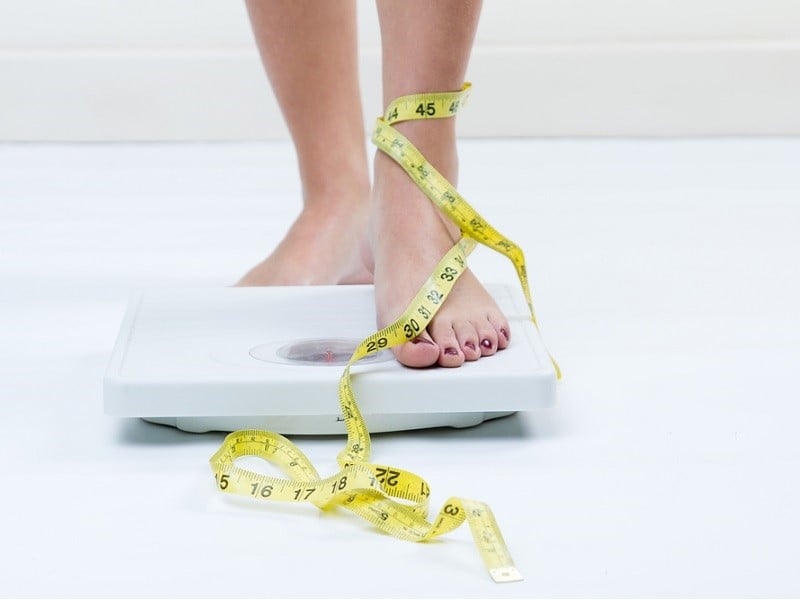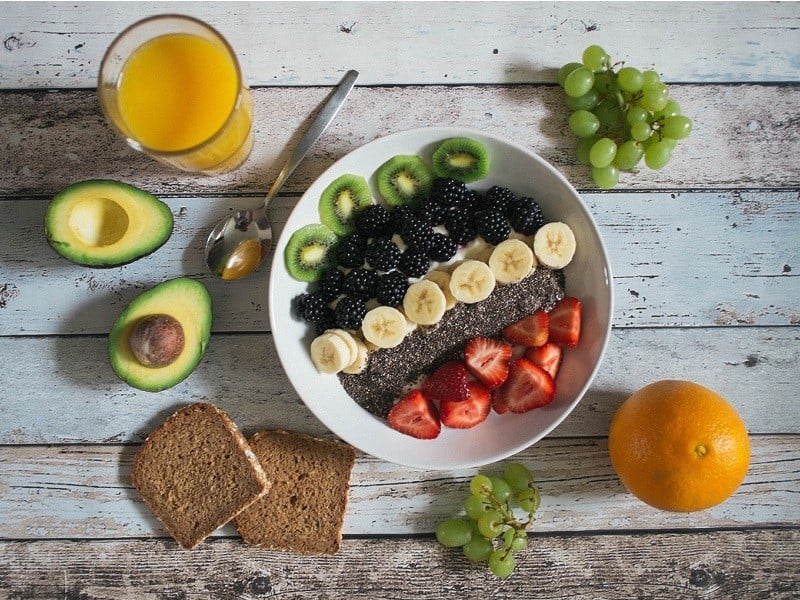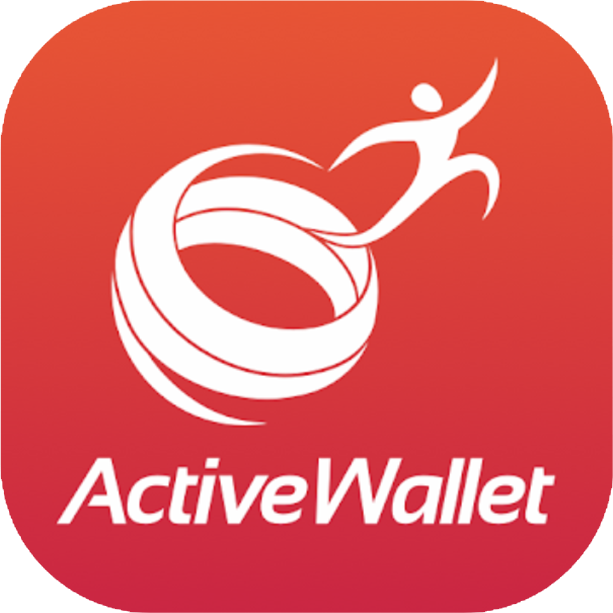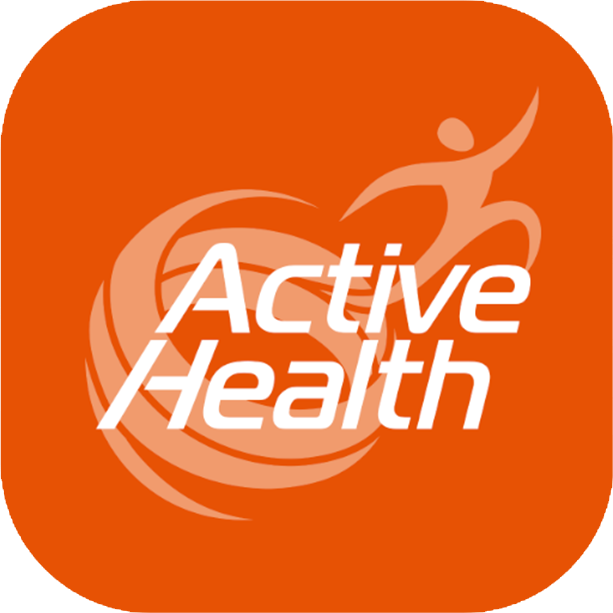As our entire nation moves towards a more active lifestyle with island-wide initiatives like the National Steps Challenge encouraging active participation from all, there's no reason for seniors to feel left out! Retirement shouldn’t be an excuse to sit back and do nothing all day long; exercise brings about a plethora of health benefits to elderly people – perhaps even more than it does for the young.
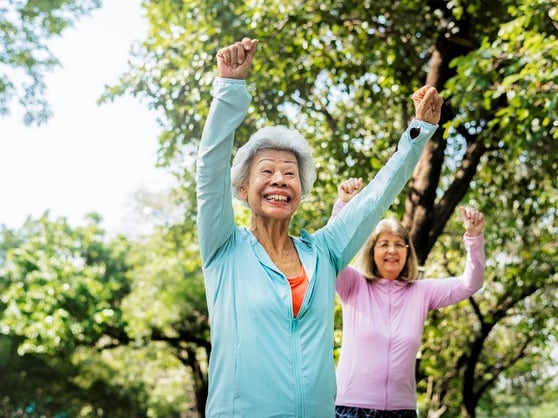 Photo: Active Health
Photo: Active Health
The wonders that exercise does for your health
We are all aware that exercise keeps us physically fit so that we can go about our daily life with more ease. But external benefits aside, the effects of exercise go way beyond the surface and extend to other areas of the body other than the muscles.
• A stronger immune system
Physical fitness doesn’t just make you stronger on the outside; it makes you stronger on the inside too. Being in the pink of health means your body can overcome infections and viruses more easily, so you won’t fall sick as often as others who are less fit. Being physically fit also means your body takes a shorter time to recover from illnesses and injury.
• Stronger bones for better balance
Osteoporosis is a dreaded problem amongst the elderly – the reduction in bone mass as one ages means that the bones are generally weaker and less able to absorb weight and impact. That’s why falls can be particularly harmful and take longer to recover from. With regular exercise, you can combat the loss in bone density and build up strength in your bones so that they become more resilient to stress.
• Reduced risk of old-age health problems
There are many degenerative diseases associated with ageing, such as dementia, Alzheimer's and Parkinson’s disease. How does exercise keep these chronic conditions at bay? For one, exercise keeps the mind’s cognitive functions active and an active mind is better able to slow down the effects of dementia. Also, exercise helps to strengthen one’s daily motor skills, which combats the symptoms of Parkinson’s disease.
Clearly, exercise opens up a treasure trove of benefits for older people. If the idea of working out for hours makes you go weak in the knees, don’t sweat it just yet! All you need are short intervals of simple exercises on a regular basis to reap the full benefits of working out.
► READ: Strength training for seniors
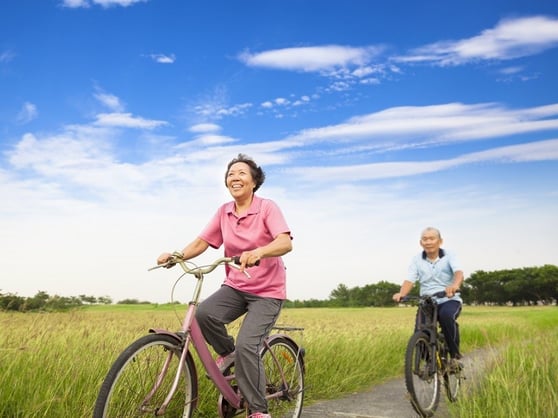 Photo: Active Health
Photo: Active Health
Exercise can be easy – here’s why
We all have heard of that one silver-haired legend who still runs marathons (and clocks faster timings than people half his or her age for that matter) but there isn’t a need to go to such extreme measures in order to experience the health benefits of exercising. In fact, the World Health Organisation recommends that all you need is 150 minutes of exercise per week. This is a manageable amount when you break it down into short, 10 to 30-minute intervals (depending on one's current fitness levels). Bear in mind that exercise sessions shouldn’t be any shorter than 10 minutes because it’s hard to experience any benefits in such a short amount of time.
The right kind of exercise
Elderly-friendly exercises fall under four general sub-categories: aerobic, strength training, balance and flexibility. Aerobic exercises train one’s general fitness and endurance; strength training helps build up individual muscles and bones; balance exercises strengthen certain muscles that are responsible for maintaining balance and flexibility exercises reduce stiffness and increase mobility. All of these exercises are important for developing well-rounded fitness and it would be unwise to skip any of them.
► READ: Increase your flexibility with these stretches
However, the proportion of these exercises that make up your weekly routine can be modified to suit your needs and it all depends on existing fitness levels and physical condition. It would be hard to determine how much of each exercise you need without some advice from an expert so if you don’t have a fitness coach or trainer to guide you along, come to one of our Active Health Labs for an assessment and some dedicated advice. While the intensity levels of exercise and the duration you should exercise for in each interval depends on your individual condition, there are certain exercises that are universally beneficial for people of all fitness levels.
► WATCH: Easy yet effective exercises for masters and seniors
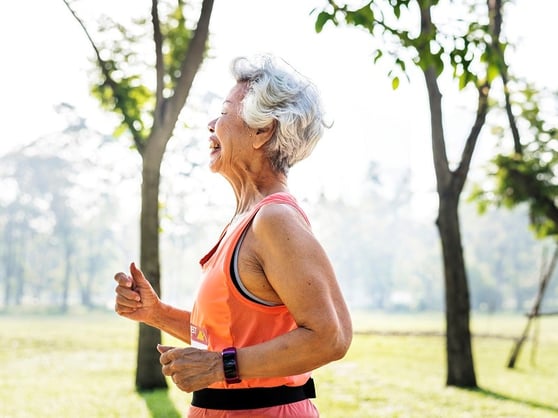 Photo: Active Health
Photo: Active Health
The best kind of exercises
1. Brisk walking
Exercise type: Aerobic
Brisk walking is a less intense type of aerobic exercise as compared to jogging, but it’s still a very beneficial exercise that gets your heart rate up and your muscles working. Brisk walking also has advantages over jogging in that it exerts less impact on your joints, so if you have weak knees or ankles, brisk walking will be a much better choice of exercise than jogging.
While brisk walking might not sound like a proper exercise, you’d be surprised that there are actually techniques to master this sport. Unlike normal walking, brisk walking is about improving your gait – that is, how fast you switch legs – as well as increasing your stride by swinging your hips slightly every step you take. Brisk walking is also about maintaining good posture: your back should be held straight, and shoulders should be set back for maximum benefits.
2. Stationary cycling
Exercise type: Aerobic
Stationary bicycles can be found easily at most gyms, including the ones at community centres. If you prefer exercising in fresh air, the fitness corners at some HDB estates also have stationary bicycles to train on. Stationary cycling is a great form of aerobic exercise and the best part is that it doesn’t exert any impact on your joints, so there’s a very minimal chance of injury.
3. Swimming
Exercise type: Aerobic
Like cycling, swimming is a great form of aerobic exercise because your joints aren’t put under heavy stress since your body weight is supported by the water. This makes swimming a great exercise for those suffering from arthritis and osteoporosis. Furthermore, the additional resistance provided by the water grants some strength training benefits.
Even if you don’t know how to swim, you can still benefit from being in the pool. For example, using a swimming board as an aid while you paddle some laps can help you train your core and leg muscles. You can also join an aqua aerobics class – you’ll be doing a series of water exercises while standing in the pool, so familiarity with swimming isn't necessarily required.
4. Squats
Exercise type: Balance
Squats are a simple and effective way to get your daily dose of balance exercise. You won’t need any equipment to do a squat other than your body weight at first. This exercise requires you to lower yourself from a standing position into a semi-sitting position. Squats are sometimes done wrong so it’s important to monitor your form. To keep your back straight as you squat, you can hold your arms out in front of you. Another variation of the squat is to start from a sitting position in a chair and to slowly get up, with your arms held out parallel to the ground and not gripping anything for support.
5. Tai Chi
Exercise type: Balance, flexibility
Tai chi is one of the best exercises ever conceived – it’s a low-intensity sport yet it has tremendous benefits for one’s balance and flexibility. The fact that tai chi is conducted in groups also makes it a great place to find like-minded exercise buddies. Furthermore, Tai Chi is well-known to be a mindful sport that helps with relaxation and focus, so it’s great for mental health too!
6. Arm weights
Exercise type: Strength-training
Lifting arm weights doesn’t only give you stronger arms, it also strengthens your upper back muscles and shoulders, so you’ll build a better posture and gain a stronger upper body. Lifting these weights is really simple: you just start from a sitting or standing position with the weights held at shoulder level and then lift them up all the way before lowering them back down to the original position.
7. Callisthenics
Exercise type: Strength-training, balance
Callisthenics is basically exercises that involve your entire body weight and they are a great way to train strength and balance. The easiest forms of callisthenics to do would be push-ups for the arms (you can perform them on an incline to make it easier), sit-ups (get someone to hold your feet in place), and lunges, where you take a big step forward from a standing position to a half-kneeling one while your rear knee hovers just above on the ground.
8. Regular stretching
Exercise type: Flexibility
Stretching should be done every day because it’s an essential exercise to keep your muscles in top condition. Make sure you stretch all the different muscles in your body: neck, back, chest, abdomen, sides, arms, thighs and calves. Also, work the joints in your body regularly to keep them from getting stiff. These include your shoulders, hips, knees and ankles.
9. Yoga
Exercise type: Flexibility, balance, strength-training
Yoga is a more structured practice of regular stretching exercises which also helps with muscle building at the same time. While you’ll be working your muscles to support your own weight during yoga, this stress won’t be exerted too much on your joints, so yoga is great for those who experience issues with their bones or joints. Like Tai Chi, yoga classes can be a great way to find friends to exercise and bond with and it also trains mental discipline and focus.
► JOIN US: Programmes and workshops specially curated for seniors
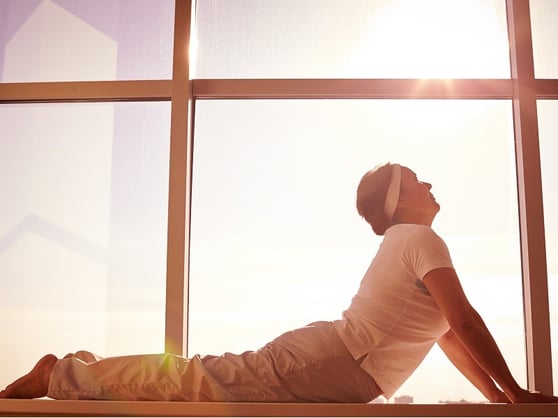 Photo: Active Health
Photo: Active Health
Safety tips for exercising
No exercise, no matter how simple, comes without risks. Follow these tips to keep your workouts safe and accident-free.
• Dress appropriately
Wearing the right clothes makes all the difference in sports, especially when it comes to shoes. The right shoes can reduce the risk of injury significantly and also help you maximise the benefits from your workout.
• Start off slow
The first five minutes of any exercise session should be slower and less intense than the rest of it – this is to get your body adjusted and warmed up before you speed up and let your heart rate increase.
• Stop at the first sign of pain
Don’t leave anything to chance when it comes to your body. You know yourself best, so at the first sign of any abnormal discomfort like a spiking heartbeat or dizziness, stop the exercise and seek medical help.
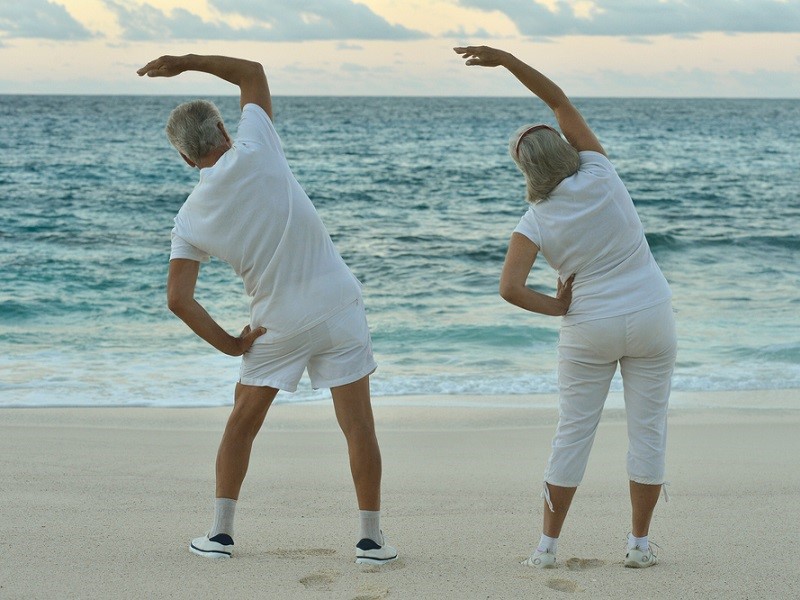 Photo: Active Health
Photo: Active Health
Exercise has so many benefits for the elderly that it should definitely be a part of every senior's lifestyle, retired or not. Break down your exercise schedule into bite-sized chunks that you can handle and pick workouts that you can manage. Exercise doesn’t have to be difficult or a chore, and you can make the active choice to enjoy your daily workouts!






